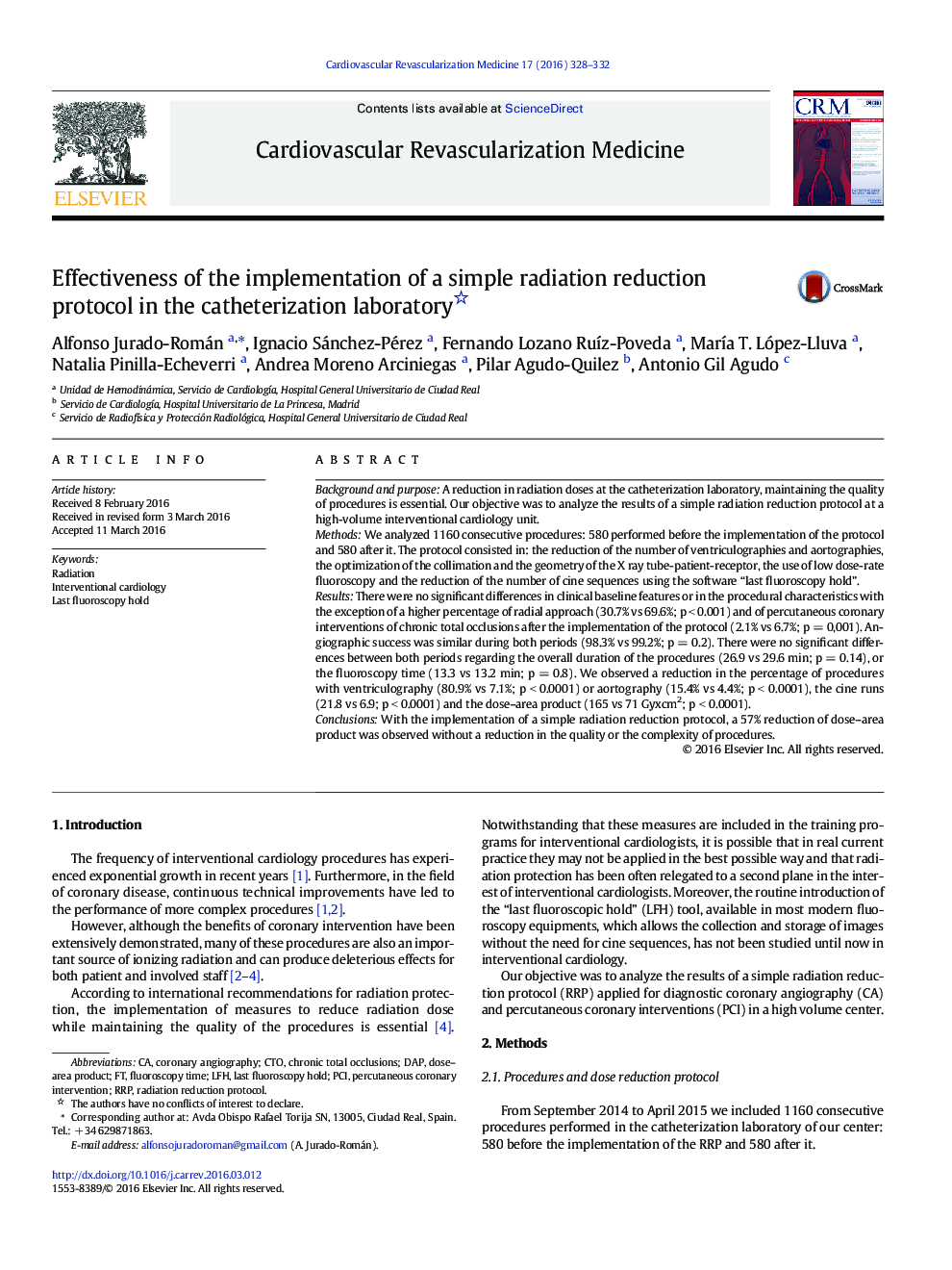| Article ID | Journal | Published Year | Pages | File Type |
|---|---|---|---|---|
| 2836860 | Cardiovascular Revascularization Medicine | 2016 | 5 Pages |
•This simple protocol can achieve a reduction in dose–area product of 57%.•It does not interfere with the quality or complexity of the procedures.•Full advantage of “Last Fluoroscopy Hold” may not be taken in real practice.•Ventriculography may be still overused in current real practice.•Radiation protection measures may not be as widespread as they should.
Background and purposeA reduction in radiation doses at the catheterization laboratory, maintaining the quality of procedures is essential. Our objective was to analyze the results of a simple radiation reduction protocol at a high-volume interventional cardiology unit.MethodsWe analyzed 1160 consecutive procedures: 580 performed before the implementation of the protocol and 580 after it. The protocol consisted in: the reduction of the number of ventriculographies and aortographies, the optimization of the collimation and the geometry of the X ray tube-patient-receptor, the use of low dose-rate fluoroscopy and the reduction of the number of cine sequences using the software “last fluoroscopy hold”.ResultsThere were no significant differences in clinical baseline features or in the procedural characteristics with the exception of a higher percentage of radial approach (30.7% vs 69.6%; p < 0.001) and of percutaneous coronary interventions of chronic total occlusions after the implementation of the protocol (2.1% vs 6.7%; p = 0,001). Angiographic success was similar during both periods (98.3% vs 99.2%; p = 0.2). There were no significant differences between both periods regarding the overall duration of the procedures (26.9 vs 29.6 min; p = 0.14), or the fluoroscopy time (13.3 vs 13.2 min; p = 0.8). We observed a reduction in the percentage of procedures with ventriculography (80.9% vs 7.1%; p < 0.0001) or aortography (15.4% vs 4.4%; p < 0.0001), the cine runs (21.8 vs 6.9; p < 0.0001) and the dose–area product (165 vs 71 Gyxcm2; p < 0.0001).ConclusionsWith the implementation of a simple radiation reduction protocol, a 57% reduction of dose–area product was observed without a reduction in the quality or the complexity of procedures.
